Faculty
GERARD AHERN: ION CHANNELS AND SENSORY RECEPTORS
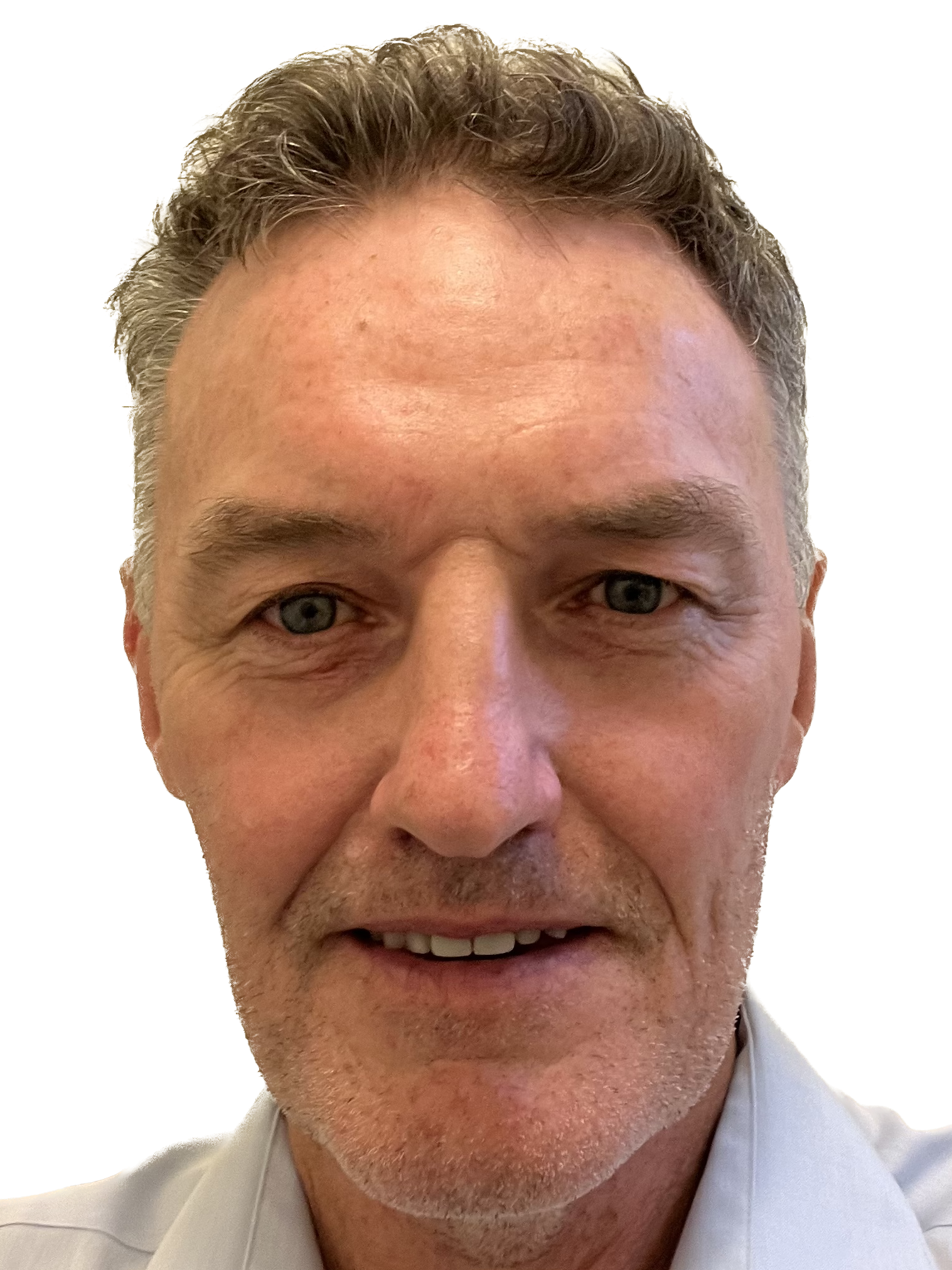
Professor, Pharmacology and Physiology
Ahern Lab
gpa3@georgetown.edu
Office: Med-Dent SW401
Lab: Med-Dent SW402
Education: BSc (Hons), 1990, LL. B., 1991, University of Canterbury (New Zealand); PhD, 1996, Australian National University (Australia)
Current Research: How do cells detect changes in the external or extracellular environment? We are interested in the fundamental mechanisms that allow cells to sense diverse chemical or physical stimuli. Our focus is a class of membrane ion channels called “Transient Receptor Potential” (TRP) channels. We also explore novel ligand signaling at G-protein coupled receptors both in neurons and immune cells. We use a combination of electrophysiological, cell imaging, genetic and biochemical techniques, and where possible, appropriate animal models.
Available for research rotations during 2024-2025, likely to accept new thesis students in 2025.
TINATIN I. BRELIDZE: STRUCTURE AND FUNCTION OF ION CHANNELS
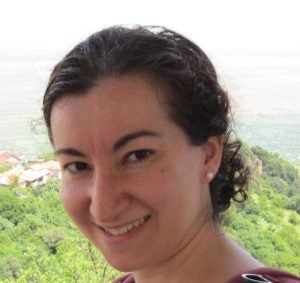
Associate Professor, Pharmacology and Physiology
Brelidze Lab
tib5@georgetown.edu
(202) 687-6178
Office: Med-Dent SE406
Lab: Med-Dent SE406
Education: Diploma in Physics (Hons), Tbilisi State University (Georgia), 1996; Ph.D. Physiology & Biophysics, University of Miami, 2003
Current Research: Ion channels are integral membrane proteins that regulate the passage of ions through cell membranes. Ion channels are essential for physiological function of living cells and abnormalities in ion channel function or expression pattern are often linked to inherited or acquired diseases. The research in my laboratory is focused on studies of mechanisms responsible for opening and closing of ion channels, identification of novel ion channel regulators and investigation of therapeutic potential of ion channel regulators. In our studies we use a variety of methods, including electrophysiology, biochemistry techniques, fluorescence-based methods, and zebrafish and rodent animal models.
MARINA CASTILLA: TEAM LEADER, GEORGETOWN DOWNTOWN CAMPUS

Associate Professor, Pharmacology and Physiology
mfc60@georgetown.edu
Office: Med-Dent NE411
Education: M.D. University of Maryland
Current Responsibilities:Dr. Castilla teaches medical gross anatomy as well as in multiple courses in the SMP program. She is the course director of G2 gross anatomy at George Mason and summer gross anatomy for GSMI. She is the team leader for the Georgetown Downtown SMP section.
HONG-YUAN CHU

Associate Professor, Pharmacology and Physiology
hc948@georgetown.edu
Lab Website
Office: Med-Dent NW410
Education: Ph.D., Neuropharmacology, Shanghai Institute of Materia Medica, Chinese Academy of Sciences, 2010
Current Responsibilities: Parkinson’s disease is characterized by the progressive degeneration of midbrain cells that produce and release dopamine and the accumulation of insoluble protein aggregates. Loss of dopamine-producing cells dramatically affect how the brain controls behaviors, leading to the manifestation of the feature parkinsonian motor symptoms, including the slowness, or even the absence, of motor activities. The accumulation and propagation of insoluble protein aggregates has been closely associated with the pathogenesis and progression of the disease. Our lab research focuses on understanding how the loss of dopamine and/or presence of protein aggregates may impact normal function of the brain circuits, which in turn leads to numerous aspects of motor and nonmotor defects in parkinsonism.
The lab is accepting students for rotations and thesis work.
GHAZAUL DEZFULI: NICOTINIC RECEPTORS IN ENERGY HOMEOSTASIS

Co-Director, MS in Pharmacology;
Associate Professor, Pharmacology and Physiology
gd96@georgetown.edu
(202) 687-1091
Office: Med-Dent NW407
Lab: Med-Dent NW409, NW411
Education: Ph.D. (Neuroscience) Georgetown University, 2014
Current Research: My research focuses on how nicotine and selective nicotinic like drugs cause weight loss. Specifically, I am interested in understanding the critical role of nicotinic receptor desensitization in body weight regulation. Animal models of obesity, selective nicotinic-like drugs (agonists and antagonists), in vivo drug administration protocols, metabolic phenotyping, as well as more recently radioligand binding assays are used. The aim of this research is to apply our understanding of how nicotine is able to lower body weight and suppress food intake toward development of nicotine-based therapeutics for weight loss.
RHONDA DZAKPASU: SPATIO-TEMPORAL PATTERNING IN IN VITRO NEURAL SYSTEMS

Associate Professor, Physics and Pharmacology
Neural Dynamics Lab
dzakpasu@physics.georgetown.edu
(202) 687-4918
Office: Med-Dent C405
Lab: Med-Dent C405
Education: University of Michigan, Ph.D., 2003
Current Research: We use arrays of extracellular multi-electrodes to record and stimulate electrical activity from cultured neural circuits as well as from acute neural slices. We modulate network rhythmicity by manipulating the balance between excitation and inhibition to investigate the principles by which neurons interact. What is the causal role of emergent coherent activity for neuronal communication?
PATRICK A. FORCELLI: NEUROPHARMACOLOGY AND NEURAL CIRCUITS OF EPILEPSY
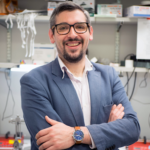
Director, PhD in Pharmacology & Physiology;
Professor, Pharmacology & Physiology
Website
paf22@georgetown.edu
202-687-7825
Office: NRB W214
Education: Ph.D. (Neuroscience), Georgetown University, 2011
Current Research: Research in the laboratory focuses on the neural circuitry underlying seizure propagation, complex behaviors, and the pharmacological treatment of neonatal seizures. We use a combination of approaches ranging from biochemistry and histology to neurophysiology (in slice and in intact animals) to behavioral monitoring and circuit manipulation (pharmacological, optogenetic, chemogenetic) to neuroimaging.
ADRIANE FUGH-BERMAN: PHARMACEUTICAL MARKETING, DIETARY SUPPLEMENTS, HERBS
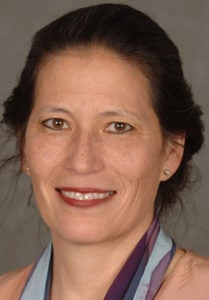
Professor, Pharmacology & Physiology
Website
ajf29@georgetown.edu
202-687-7845
Office: NRB W215
Education: M.D., Georgetown University, 1988
Current Research: I direct PharmedOut , a research and education project that promotes rational prescribing practices. I research industry marketing techniques and how they interact with the culture of medicine, and teach physicians, other health care providers, graduate and medical students about clinical trials and evidence-based prescribing. I also teach about the risks and benefits of botanical medicines and dietary supplements, and direct the Urban Herbs project, an ecologic gardening project with various demonstration gardens on the GUMC campus. With Dr. Tom Sherman, I co-direct a new track in Natural Products within the masters program in pharmacology. I also direct theUrban Herbs project on the Georgetown campus. This is a garden project illustrating many medicinal plants.
YVONNE HERNANDEZ: DIRECTOR OF THE MEDICAL PHARMACOLGY COURSE
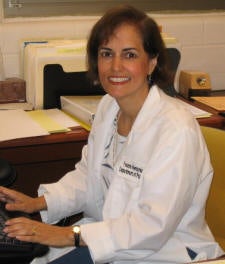
Associate Dean for Pre-Clinical Education, GUSOM;
Associate Professor, Pharmacology
Hernandez Home Page
hernandy@georgetown.edu
(202) 687-5179
Office: Med-Dent NW406
Education: Ph.D. (Pharmacology), Georgetown University
KEN KELLAR: NICOTINIC ACETYLCHOLINE RECEPTORS IN CNS AND PERIPHERAL NERVOUS SYSTEM

Professor & Chair, Department of Pharmacology & Physiology
Lab Website
kellark@georgetown.edu
(202) 687-1032
Office: Medical Dental Bldg SE402
Lab: Medical Dental Bldg NE416-420
Education: Ph.D., Pharmacology, The Ohio State University, 1974
Current Research: My laboratory studies the subunit composition, pharmacological properties and regulation of neuronal nicotinic receptors. We are particularly interested in understanding the importance of desensitization of these receptors and the mechanisms by which chronic exposure to nicotine increases these receptors in brain.
LUDISE MALKOVA: NEURAL SUBSTRATES OF EMOTIONAL AND SOCIAL BEHAVIOR IN ANIMAL MODELS
Professor, Pharmacology
malkoval@georgetown.edu
(202) 687-0224
Office: NRB, W209B
Lab: DCM
Education: BA, MA Charles University Prague, Czech Republic; Ph.D. (1986) Czechoslovak Academy Sciences, Prague, Czech Republic
Current Research: Neural substrates of social and emotional behavior; the role of the amygdala and orbitofrontal cortex in processing reward; medial temporal lobe structures (hippocampus, perirhinal cortex) and cognitive functions (object recognition and spatial memory); amygdala and midbrain (superior colliculus) interactions; autism, PTSD; reversible pharmacological manipulations of discrete brain structures, systemic drug effects.
SUSAN MULRONEY: PROFESSOR, PHARMACOLOGY & PHYSIOLOGY

Professor, Pharmacology and Physiology;
President, GU Faculty Senate
mulrones@georgetown.edu
SMP Website
(202) 687-1017
Office: Med-Dent NE409
Lab: Med-Dent NE407
Education: Georgetown University MS, 1988, Ph.D. (Physiology), 1990
Currently: I am the President of Georgetown University’s Faculty Senate and former Director of the Special Master’s Program; I spend my time primarily in administrative and educational work. I also direct and give the physiology lectures in the medical Gastrointestinal Biology course, and am actively involved in the graduate programs at GeorgeSquared (the joint Georgetown/George Mason collaboration). I continue to engage in collaborative research studying the impact of gonadal sex on the development of diabetic renal disease and cardiovascular disease. I am also co-author (with Dr Adam Myers) of the Netter’s Essential Physiology textbook.
ALEXEY OSTROUMOV: MECHANISMS OF NEUROPSYCHIATRIC DISORDERS

Assistant Professor, Pharmacology and Physiology
Website
PubMed search for publications
Office: W224A NRB
Education: PhD, International School for Advanced Studies (SISSA, Italy), 2010
Current Research: Our main goal is to understand the causal mechanisms, by which modifications in synaptic plasticity contribute to neural circuit remodeling and aberrant behaviors associated with neuropsychiatric disorders. To this end, we combine slice and in vivo neurophysiology with viral-genetic and behavioral approaches.
DANIEL PAK: MOLECULAR MECHANISMS OF SYNAPTIC PLASTICITY

Professor, Pharmacology and Physiology
Molecular Neurobiology of Memory [mNeMe]
dtp6@georgetown.edu
(202) 687-8750
Office: SW407 Med/Dent
Lab: SW406 Med/Dent
Education: Harvard University, B.A., 1991; University of California at Berkeley, PhD, 1996
Current Research: My laboratory is interested in the molecular changes that occur at CNS synapses in response to experience. We utilize a combination of approaches ranging from molecular biology and biochemistry to cell biology, imaging, and mouse genetics to address three major questions: 1) how do neurons encode long-term storage of information? 2) how do neurons maintain stability of function by homeostatic synaptic plasticity mechanisms? and 3) how does failure of these mechanisms contribute to neurological and neurodegenerative disorders?
JOHN PARTRIDGE: DIRECTOR, MS IN PHARMACOLOGY

Co-Director, MS in Pharmacology
Associate Professor, Pharmacology & Physiology
jp374@georgetown.edu
(202) 687-5196
Office: NW414 Med/Dent
Education: Xavier, BS, 1993; Vanderbilt, PhD, 2000
Current Research: My varied research interests include determining the mechanisms governing synaptic transmission in the dorsal striatum using electrophysiological, genetic and biochemical methods. The striatum is a crucially important brain region involved in the smooth execution of motor control and other various functions. Disruptions in striatal physiology result in debilitating motor problems exemplified by Parkinson’s disease and Huntington’s disease. My research goals are to more fully understand the complex interactions of small molecule neurotransmitters in the striatum. These include investigating the relationships and crosstalk among glutamate, dopamine, acetylcholine and endocannabinoids governing normal and pathological states which dictate striatal output.
TOM SHERMAN: PROFESSOR, PHARMCOLOGY & PHYSIOLOGY

Professor, Pharmacology & Physiology
shermant@georgetown.edu
(202) 687-7704
Office: NE407 Med/Dent
Education: Ph.D. (Biochemistry) University of Texas Southwestern, 1983)
Interests: nutrition and the impact of nutrition on metabolism, body weight, chronic disease risks, and mental health; corporate influences on food production.
Administration: Associate Director of the Special Masters Program, Director of the Biomedical Sciences PhD Program and chair of the Graduate Advisory Committee that regulates and establishes graduate school policy at the medical center; represent the medical center on the Graduate School Academic Integrity Committee.
Medical teaching: Co-director of medical Metabolism, Nutrition & Endocrinology course. Graduate teaching includes Cell & Molecular Physiology, Fundamentals of Molecular Biology & Genetics, Human Nutrition & Health, Advanced Topics in Nutrition, and directs the Regulatory Systems module for the Interdisciplinary Program in Neuroscience.
YUICHIRO SUZUKI: REDOX SIGNALING; PULMONARY HYPERTENSION & RIGHT HEART FAILURE

Professor, Pharmacology & Physiology
Homepage
ys82@georgetown.edu
(202) 687-8090
Office: NW402a Med/Dent
Lab: NW403 Med/Dent
Education: PhD, Medical College of Virginia,1991
Current Research: The general goal of my laboratory is to investigate signal transduction mechanisms for cardiac and smooth muscle cell regulation in order to develop therapeutic strategies against various heart and lung diseases. I have a long-standing interest in how redox processes regulate cell signaling, and my laboratory continues to contribute to the understanding of the mechanism of redox signaling. Another major focus of my laboratory is to study mechanisms of cell growth and death in pulmonary vascular smooth muscle and right heart muscle. We seek to develop therapeutic strategies to treat pulmonary hypertension patients, without adversely affecting the weakened right heart.
STEFANO VICINI: LIGAND GATED CHANNELS AT CENTRAL SYNAPSES

Professor, Pharmacology & Physiology
Vicini Lab Website
svicin01@georgetown.edu
(202) 687-6441
Office: BSB, 225
Lab: BSB, 228-230
Education: Ph.D., U Torino, Italy, 1979
Current Research: Using transgenic mice with the two major striatal output pathways labeled we are answering a fundamental question: What role tonic and phasic GABA and NMDA conductance plays in striatal disorders? We are studying the functional consequence of the activation of distinct dopamine receptors on NMDA and GABAa receptor subtypes. Our study has great potential to identify novel therapeutic targets for treating disorders associated with striatal dysfunction including Parkinson’s disease, Huntington’s disease, tardive dyskinesia, Tourette’s syndrome and drug addiction.
TINGTING WANG: SYNAPTIC HOMEOSTATIC PLASTICITY IN HEALTH AND DISEASE

Assistant Professor, Pharmacology & Physiology
Wang Lab Website
tw652@georgetown.edu
(202) 687-1099
Office: SE407 Med/Dent
Lab: SE407 Med/Dent
202-687-1550
Education: Ph.D., Neurobiology, Duke University, 2009
Current Research: The brain is incredibly complex and malleable in terms of developmental and learning-related plasticity. Homeostatic signaling systems act to stabilize the function of individual nerve cells and neural circuitry, thereby ensuring robust and reproducible brain function and behavior throughout life. My laboratory investigates the molecular mechanisms that underlie the homeostatic control of the nervous system and studies how impaired homeostatic plasticity is involved in neurological, neuropsychiatric and neurodegenerative disorders. We are particularly interested in the intercellular signals that convey information between neurons and glia during homeostatic plasticity. We use an array of cutting-edge electrophysiological, imaging, molecular and genetic tools in Drosophila melanogaster and mice to address:
1. What is the signaling function of glia in synaptic homeostatic plasticity?
2. How does dynamic regulation of extracellular matrix (ECM) and adhesion molecules modulate synaptic transmission?
3. How do genetic mutations and failed homeostasis contribute to neurological and psychiatric diseases, such as epilepsy, autism spectrum disorders and Alzheimer’s Disease?
LEWIS J. WATSON: DIRECTOR, MS IN PHYSIOLOGY & BIOPHYSICS

Director, MS in Physiology & Biophysics;
Associate Professor, Pharmacology & Physiology
Josh.Watson@georgetown.edu
Education: Ph.D., Physiology and Biophysics, University of Louisville
Current Responsibilities: Dr. Watson serves as Director of the MS in Physiology & Biophysics program and teaches Cardiovascular Physiology as well as selected topics in other courses. His research interests include the use of Drosophila to explore metabolism, diabetes, and receptor trafficking in the cardiovascular system.
JENNIFER WHITNEY: DIRECTOR, SPECIAL MASTER’S PROGRAM

Director, Special Master’s Program;
Co-Director, MS in Physiology & Biophysics;
Professor, Pharmacology & Physiology
SMP website
jlr35@georgetown.edu
(202) 687-5540
Office: NE404 Med-Dent
Education: Ph.D. (Physiology) Georgetown University
Current Responsibilities: Dr. Whitney serves as Director of the Special Master’s Program and Co-Director of the MS in Physiology & Biophysics. She teaches the non-cadaveric Gross Anatomy lectures for the Cardiopulmonary Biology, GI Biology, and Sexual Development & Reproduction courses, and is the Course Director for the Advanced Physiology & Pathophysiology graduate course. Dr Whitney is also director of the summer Medical Physiology course for GSMI. Her research interests are on growth hormone-mediated sex differences in diabetic renal disease.
Adjunct Faculty
There are also a number of adjunct faculty at neighboring institutions who serve as co-mentors for student theses and for laboratories available for rotation projects.
NIAZ SAHIBZADA: CENTRAL NERVOUS SYSTEM CONTROL OF GASTROINTESTINAL FUNCTION
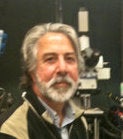
Adjunct Professor, Department of Pharmacology & Physiology
sahibzan@georgetown.edu
(202) 687-1500
Office: 410 Med/Dent
Lab: 412 Med/Dent
Education: Ph.D. (Neuroscience) University of Sheffield, England 1990
Current Research: The emphasis of research in my laboratory is on understanding the brain neurocircuits that regulate the function of the upper gastrointestinal tract such as those that control gastric tone and motility. To this end, we employ varied approaches that include microinjection of chemical substances in the brain, recordings of end organ function, patch-clamp electrophysiology in brain slices and neuroanatomical tract tracing.
JUAN M. SAAVEDRA: NEURODEGENERATIVE, TRAUMATIC, AND MOOD DISORDERS
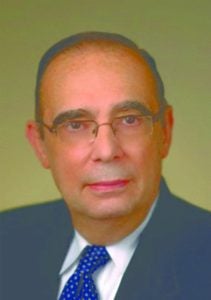
Adjunct Professor, Department of Pharmacology & Physiology
Laboratory of Neuroprotection Website
jms522@georgetown.edu
(202) 687-8968
Education: M.D. Buenos Aires University, Argentina 1965
Current Research: At the NIH, Dr. Saavedra’s research interests included molecular and physiological aspects of endocrine and cardiovascular regulation, and more recently mechanisms of neuroprotection in stroke, Alzheimer’s disease, mood disorders and Traumatic Brain Injury. The main objective of the research was to find novel therapies for inflammatory, degenerative, mood and traumatic disorders of the brain. In September 2013 Dr. Saavedra transitioned from NIH to Georgetown University, where he joined the Department of Pharmacology and Physiology. In his new laboratory, Dr. Saavedra continues his work to advance his more recent finding, the observation that a novel class of compounds, the sartans, previously used for the treatment of cardiovascular and metabolic disorders, are potent neuroprotective agents and may be of significant therapeutic relevance for the treatment of neurodegenerative, mood and traumatic brain disorders.
ROBERT P. YASUDA: STRUCTURE AND FUNCTION OF NICOTINIC ACETYLCHOLINE RECEPTORS
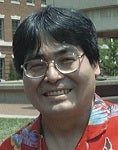
Adjunct Professor, Pharmacology & Physiology
Yasuda Lab
yasudar@georgetown.edu
Office: Med-Dent SW407
Lab: Med-Dent NE411
Education: University of Colorado, Ph.D. (Pharmacology) 1986
Research: My laboratory is involved in the study of the structure and function of neuronal nicotinic receptors in the brain that are composed of five protein subunits that act as ligand-gated ion channels. These receptors are thought to be involved in the ncotine addition seen in smokers. We utilize molecular biological, biochemical and electrophysiological methods to study these receptors. Specifically, we are interested in understanding the nature of the nicotine binding site and how the order of these nicotinic receptor subunits affects function. One approach we are currently using is the creation of concatamers of the nicotinic receptor subunits that allow us to make receptors composed of subunits of known order and composition.
